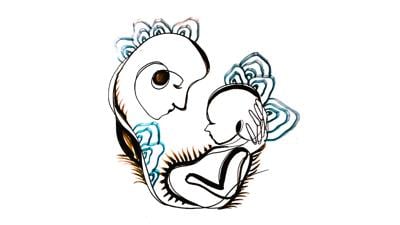
From a young age, children establish a connection with their parents known as “eye gaze” in which the child looks where their parent is looking. This mutual communication experience is one of the first milestones babies achieve in social-cognitive development, but a recent study shows that deaf children of hearing parents can be profoundly affected.
The study, led by a research team at the UW’s Institute for Learning & Brain Sciences (I-LABS), was published Oct. 15 in “Developmental Science.” I-LABS researcher scientists Dr. Rechele Brooks and Dr. Andrew Meltzoff collaborated with Jenny Singleton, a linguistics professor from The University of Texas at Austin.
Using their combined expertise in sign language acquisition and gaze-following, they conducted the first experimentally controlled study on deaf infants of deaf parents.
The study surveyed 12 deaf infants raised by deaf parents and 60 hearing infants that were matched for age and gender. Both groups had their own experience with language, both signed and spoken.
In the experiment, each infant sat with their parent and faced Brooks across the table.
For each trial, Brooks looked at one of the two objects that were placed on either side of the table and waited for the infant’s response. In order to control for speech-related variables, Brooks did not talk during the experiment. The trials were then scored based on where the infant looked.
The results showed that deaf infants exposed to American Sign Language (ASL) were twice as likely to accurately follow the gaze of the researcher than the hearing infants, aligning with the original hypothesis.
“We were hoping that the signing experience provides a boost of visual experience so that the deaf children would be more experienced [than the hearing children] in gaze-following,” Brooks said. “That’s what we ended up seeing in the study, but there was just so much more consistency than I was expecting.”
One argument that could arise from the results is whether the child’s personal stage in development comes into play.
Brooks was more confident in their findings because they took the time to find deaf children who were, within seven days, the same age as the hearing children.
“We didn’t want to make the age gap too wide so we went for the seven day window rather than just pulling kids that were close to the same age,” Brooks said. “That matching lets us know that [the results aren’t] just because some children have been in the world longer and are further along in their development.”
Another common behavior among the deaf infants in the study was “checking back,” where the infant would look back at the adult after following their gaze at the object to show that they want more information.
Although hearing children typically do not check back consistently until their first birthday, Brooks said it is more imperative for deaf children to learn this pattern early on because they have to function in a visual world.
“Deaf interactions progress in sequential order — if you’re signing, you have to wait until the person understands what you signed before moving on — and this could explain why we saw even the youngest deaf infants already tuning into this pattern of looking and looking back,” Brooks said.
Parents could also be a contributing factor as to why the deaf infants showed more advanced gaze behavior. For example, if parents are supporting the children with a language-rich environment, the children gain more immersion and connection with their parents.
In the future, Singleton said the team is planning to conduct experiments with hearing infants born to deaf parents in order to evaluate whether the accelerated development they observed in this study is due to early sign language experience provided by the parents, or if it is an enhanced visual skill due to sole reliance on visual navigation.
“If [the hearing infants] show accelerated gaze behavior similar to the deaf infants, then it means that it is the deaf caregiver’s behaviors that are socializing the early development of gaze-following,” Singleton said.
Although this study reveals how various life experiences can impact a child’s social-cognitive development, Singleton also believes it defies the stereotype that deaf children have deficits and struggle to navigate the world.
“We show through the results of the study that human infants can adapt to their circumstances, and even thrive,” Singleton said. “Deaf infants rely on their eyes and when caregivers respond to that channel, we see that these infants optimize, even accelerating, beyond the normative developmental pattern.”
Reach contributing writer Shannon Hong at development@dailyuw.com. Twitter: @shannonjhhong
Like what you’re reading? Support high-quality student journalism by donating here.

(0) comments
Welcome to the discussion.
Log In
Keep it Clean. Please avoid obscene, vulgar, lewd, racist or sexually-oriented language.
PLEASE TURN OFF YOUR CAPS LOCK.
Don't Threaten. Threats of harming another person will not be tolerated.
Be Truthful. Don't knowingly lie about anyone or anything.
Be Nice. No racism, sexism or any sort of -ism that is degrading to another person.
Be Proactive. Use the 'Report' link on each comment to let us know of abusive posts.
Share with Us. We'd love to hear eyewitness accounts, the history behind an article.